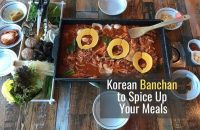Want to get rid of that salad bag that’s been sitting in your fridge?
This post covers everything about ssam (Korean lettuce wrap) including:
- Different types of ssam
- How to eat them
- Which foods go well with them
- Where to find them
Ssam is a tasty way to get your veggies.
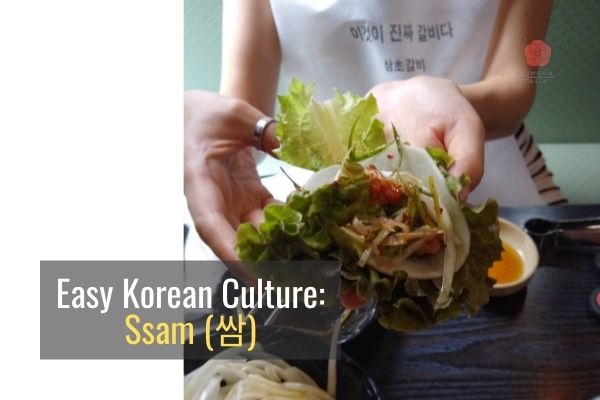
Key Takeaways
- Ssam means wrap in Korean.
- Ssam must be bite-sized to eat as a whole.
- You can put one protein, a drop of ssamjang, and a slice of garlic in a lettuce or sesame leaf.
Ssam are like a warm, nourishing hug for your meals. You can think of them as mini-burrito bites of leafy goodness.
I tried them first in Korea Town L.A., and was later blown away by the variety in Seoul, South Korea.
Here are the different types of Korean ssam and how to eat them.
What are ssam?
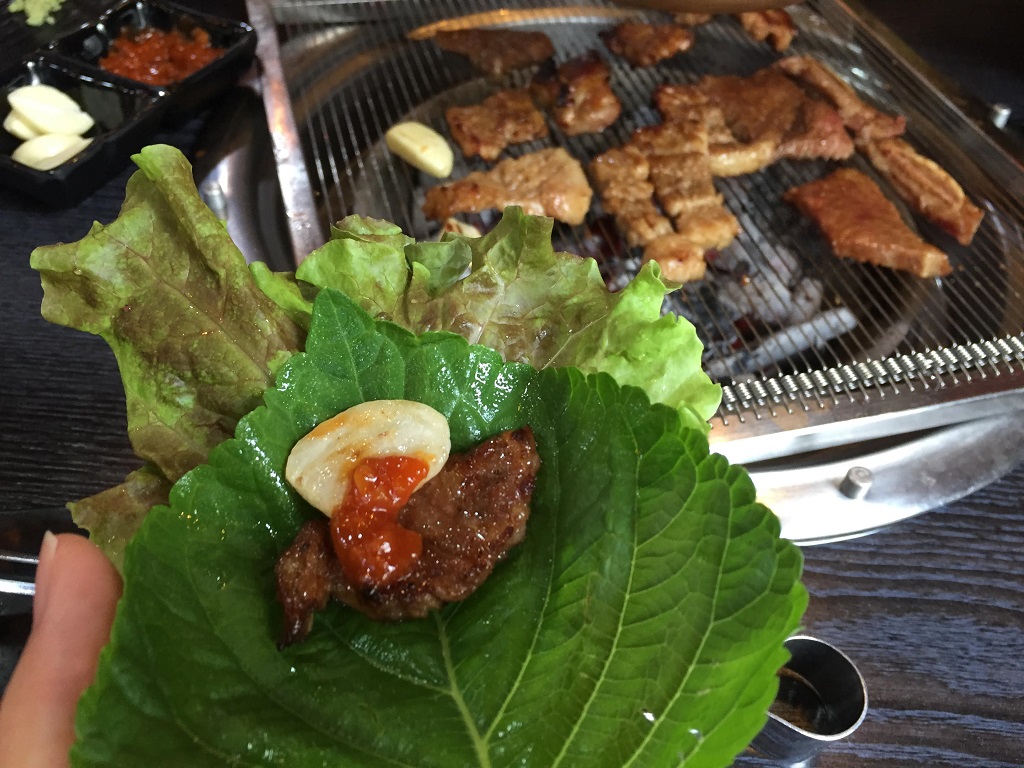
Ssam (쌈) isn’t just lettuce. It includes any leafy vegetable along with kelp. The word itself literally means “wrap” in Korean. You can wrap anything like barbecued meat, raw fish (회/sashimi), rice, doenjang, ssamjang, etc. and add delicious nutrition to every bite.
Insider Tips!
- Ssam must be bite-sized. Koreans eat ssam whole.
- Making ssam for someone is considered affectionate in Korea. Usually, Korean kids make one for their parents. (No need to keep making it for others. Just the first one will do.) It’s one of the many ways to build jeong.
Ssam-based dishes include:
- Ssambap (쌈밥): Bap (밥, rice) is the star of ssambap. This one comes with gangdoenjang (강된장, soybean paste sauce), ureong doenjang (우렁된장, freshwater snail soybean paste) or sundubu-jjigae (순두부찌개, spicy soft tofu stew) with vegetable assortments. Steamed rice and gangdoenjang wrapped in steamed pumpkin leaf (호박잎) is a delicacy that can’t be missed.
- Bossam (보쌈): Bossam is a Korean pork dish boiled in spices and thinly sliced that you eat with kimchi, spicy radish or ssamjang in lettuce or sesame leaf (깻잎). Since the taste is fantastic with fresh kimchi, every Korean eats bossam after making kimchi (김장, gimjang or preparing kimchi for the winter). Restaurants often sell bossam and jokbal together.
One thing’s for certain, ssam will add joy and variety to every meal.
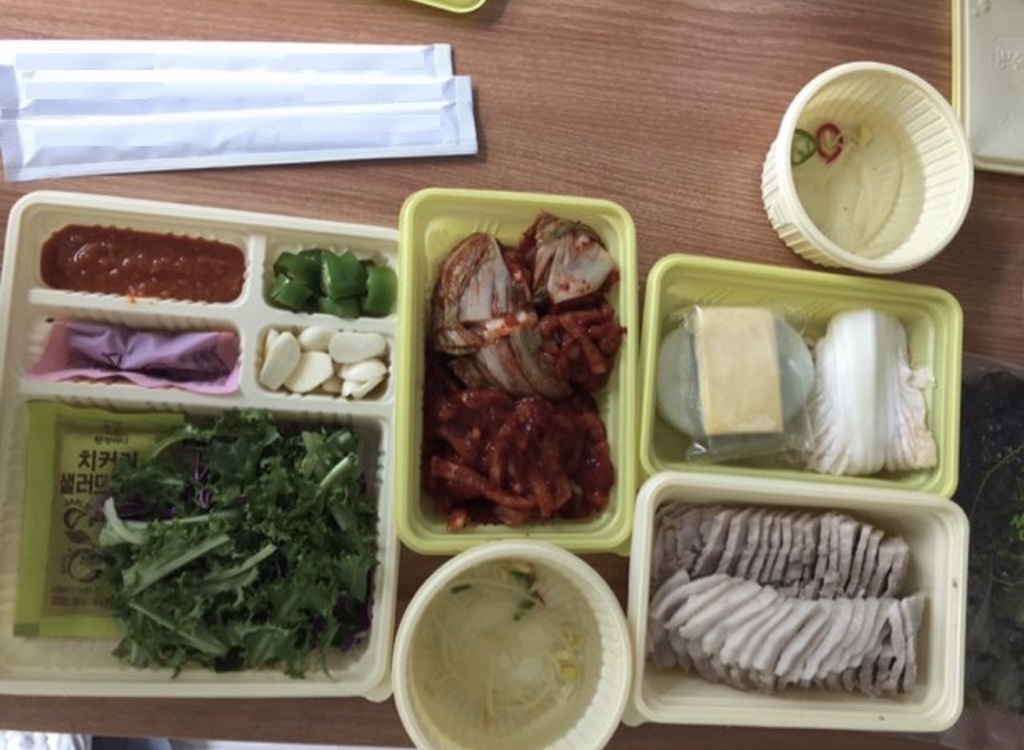
The origins of ssam in Korea
Korean ssam comes from the Buddhist practice of vegetarianism during the Goryeo period (918 to 1392).
Chinese poet Yang Yunfu during the Yuan Dynasty (1271 to 1368) wrote about how Koreans wrapped rice with raw vegetables.
Ssam became an established seasonal dish during the Choseon Dynasty (1392 to 1897), especially enjoyed at the Daeboreum Full Moon Festival.
Ssam evolved to include all types of dishes including seafood, meat and tofu.

Types of Korean ssam
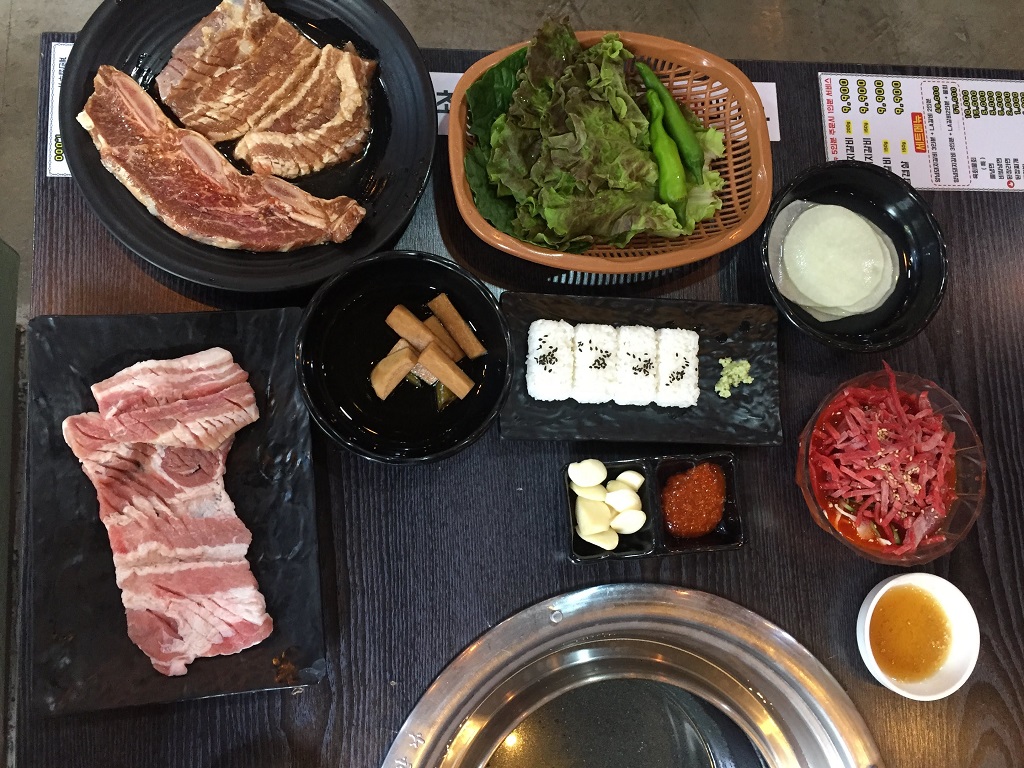
These are the most common dishes containing ssam.
- Sangchu Ssam (상추쌈): Wrapped with lettuce
- Baechu Ssam (배추쌈): Wrapped with napa cabbage leaf
- Chwi Ssam (취쌈): Wrapped with chwinamul
- Eossam (어쌈): Thin fish filet wrap
- Gimssam (김쌈): Wrapped with gim, seaweed
- Hobakip Ssam (호박잎쌈): Wrapped with pumpkin leaf
- Jeonbok Ssam (전복쌈): Sliced and soaked dried abalone wrap
- Kimchi Ssam (김치쌈): Wrapped with kimchi
- Kkaenip Ssam (깻잎쌈): Wrapped with perilla leaf
- Milssam (밀쌈): Wrapped with a thin crepe made from wheat flour
- Muneo Ssam (문어쌈): Sliced octopus wrap
- Po’ssam (포쌈): Seasoned raw beef wrap
Leafy Ssam Ingredients:
A ssam menu at a Korean Jokbal place is a sight to behold. It looks more like an encyclopedia entry on horticulture. If you don’t find your favorite leafy veggie on this list, feel free to try it out!
- Cheong Sangchu (청상추) – Green Lettuce
- Jeok Sangchu (적상추) – Red Lettuce
- Kkaennip (깻잎) – Perilla or Sesame Leaf
- Samchoo (쌈추) – Korean Cabbage
- Ssukgat (쑥갓) – Crown Daisies
- Bitamin (비타민) – Dachae (다채) or Tatsoi
- Ssam Kale (쌈케일) – Baby Kale
- Jeok Geundae (적근대) – Red Rhubarb Chard
- Cheong Gyeoja (청겨자) – Green Mustard
- Jeok Gyeoja (적겨자) – Red Mustard
- Chikon (치콘) – Endive
- Newgreen (뉴그린) – Toscano
- Chikeori (치커리) – Green Chicory
- Jeok Chikeori (적치커리) – Red Chicory
- Cheonggyeongche (청경채) – Bok Choy
- Sugalopeu (슈가로프) – Sugarloaf Lettuce
- Costamari (코스타마리) – Ice Queen Lettuce
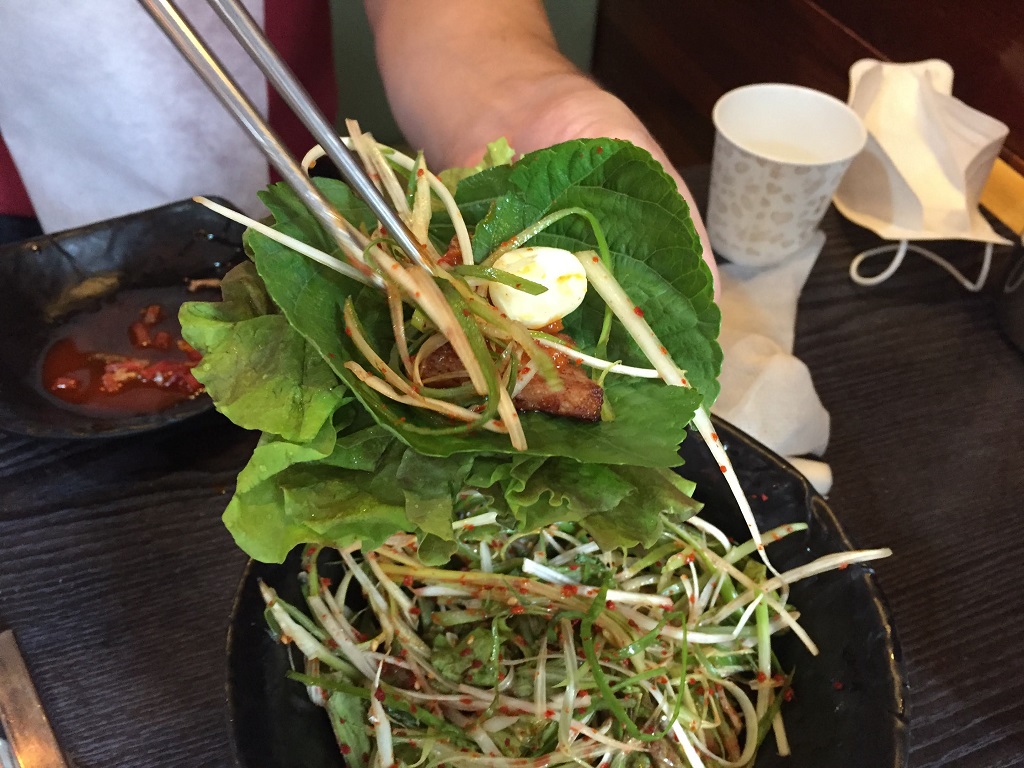
Bonus Ssam Ingredients:
The ingredients below add a medley of extra flavors to ssam!
- Myeong-yi Namul (명이나물): Pickled garlic leaf
- Roasted or pickled garlic
- Ssamjang or salted sesame oil
- Yangpa Jeorim (양파절임): Sliced onion pickled in soy sauce
- Pachae Muchim (파채무침): Green onion salad
- Mussam (무쌈): Pickled white radish slices
The benefits of Korean ssam
Healthy: Leafy vegetables add vitamins, minerals and fiber
Satiating: Fill you up and keep you that way for hours
Tasty: Add bitter and sour notes along with crunchy or soft texture
Variety: Broaden your horizons and add something new to your day
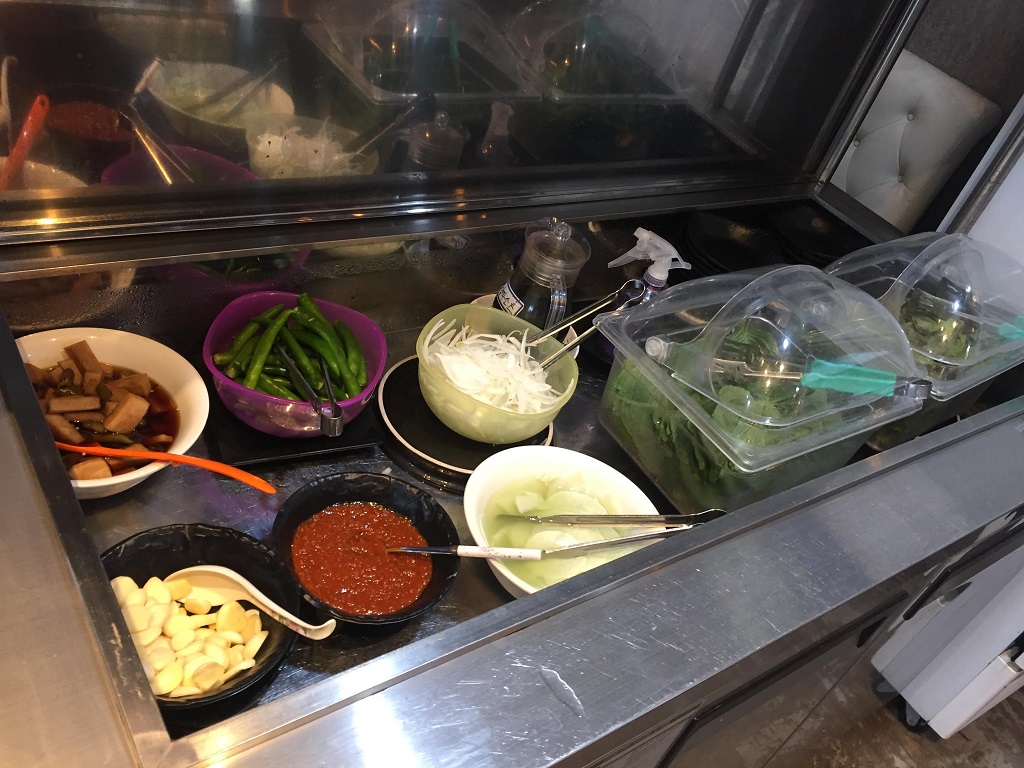
Insider tips!
Ssam ingredients (leafy vegetables) are served at restaurants before the main dish (meat).
You can refill ssam ingredients as well as banchan at the Korean version of a salad bar called a self-bar (셀프바).

Where to find ssam?
You can buy traditional ssam at any Korean grocery store. No Korean grocery store nearby? The best part is you can get any leafy vegetable and boom, you’ve got ssam!
What to put in Korean ssam?
Traditionally, Koreans use:
- one protein
- one spoon of rice
- a pinch of banchan
- a drop of ssamjang
- a slice of garlic (raw, pickled or roasted)
- a slice of gochu (green chili)
Try it any way you like though.
You can work ssam into every meal. It especially goes great with:
- Steak
- Veggies
- Tofu
- Bacon
- Seafood
How to enjoy Korean ssam at home
Ssam is easier to use than you’d think. Here are two ways to enjoy it anywhere!
Simple way
Steps
- Wash in cold water (skip for cooked ingredients)
- Remove any wilted areas or stems
- Lay flat on palm of your hand
- Place ingredients (1 protein and other ingredients) in center
- Close the wrap with other hand by pulling edges of leaf up into a little bag
- Eat and enjoy!
Fancy way
Steps
- Wash in cold water (skip for cooked ingredients)
- Remove any wilted areas or stems
- Lay flat on palm of your hand
- Place ingredients (1 protein and other ingredients) in center
- Fold bottom and top up over ingredients
- Fold both sides over
- Eat and enjoy!
Korean ssam etiquette
Here are a few do’s and don’ts when it comes to ssam.
- Wash your hands before. Most restaurants provide wet wipes.
- Don’t make ssam too big so that ingredients spill out.
- Putting two or more meat pieces in your ssam looks greedy, but I won’t judge. One or two at a time is standard practice.
- Close your mouth while chewing. (Making ssam huge is fun, but remember to close your mouth!)
- Make wraps for the person at your table cooking the meat periodically, because they’re doing the dirty work.
- Getting refills is totally normal, so take a lot, but eat what you take.

Subscribe for
exclusive info on Korea
Did we miss anything?
Ssam is a game changer for meals.
Let us know your favorite ssam in the comments!



